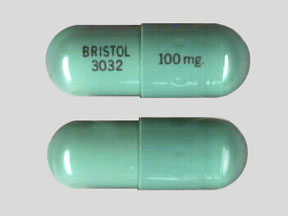Lomustine Side Effects
Medically reviewed by Drugs.com. Last updated on Mar 8, 2023.
Applies to lomustine: oral capsule.
Warning
Oral route (Capsule)
Lomustine causes delayed, dose-related, cumulative, fatal myelosuppression. Monitor blood counts for at least 6 weeks after each dose. Do not administer more than one dose every 6 weeks. Physician and pharmacist should emphasize to patient that overdosage can cause fatal toxicity.
Along with their needed effects, medicines like lomustine can sometimes cause unwanted effects such as blood problems, loss of hair, and other side effects; these are described below. Also, because of the way these medicines act on the body, there is a chance that they might cause other unwanted effects that may not occur until months or years after the medicine is used. These delayed effects may include certain types of cancer, such as leukemia. Discuss these possible effects with your doctor.
Serious side effects of Lomustine
Along with its needed effects, lomustine may cause some unwanted effects. Although not all of these side effects may occur, if they do occur they may need medical attention.
Check with your doctor immediately if any of the following side effects occur while taking lomustine:
More common
- Bleeding gums
- chest pain
- shortness of breath
- sore throat
- sores, ulcers, or white spots on the lips or in the mouth
- unusual bleeding or bruising
- unusual tiredness or weakness
Less common
- Awkwardness
- black, tarry stools
- blood in the urine or stools
- confusion
- cough or hoarseness
- decrease in urination
- fever or chills
- lower back or side pain
- painful or difficult urination
- pale skin
- pinpoint red spots on the skin
- slurred speech
- swelling of the feet or lower legs
- troubled breathing with exertion
- unusual bleeding or bruising
- unusual tiredness or weakness
Incidence not known
- Abdominal or stomach pain or tenderness
- bone pain
- change in frequency of urination or amount of urine
- clay colored stools
- dark urine
- decreased appetite
- dizziness
- drowsiness
- dry mouth
- headache
- increased blood pressure
- increased thirst
- itching
- loss of appetite
- nausea or vomiting
- skin rash
- weight gain
- yellow eyes or skin
Other side effects of Lomustine
Some side effects of lomustine may occur that usually do not need medical attention. These side effects may go away during treatment as your body adjusts to the medicine. Also, your health care professional may be able to tell you about ways to prevent or reduce some of these side effects.
Check with your health care professional if any of the following side effects continue or are bothersome or if you have any questions about them:
Less common
- Darkening of the skin
- diarrhea
Incidence not known
- Blurred vision
- changes in patterns and rhythms of speech
- confusion about identity, place, and time
- decreased vision
- eye pain
- hair loss or thinning of the hair
- shakiness and unsteady walk
- swelling or inflammation of the mouth
- trouble with speaking
- unsteadiness, trembling, or other problems with muscle control or coordination
- unusual drowsiness, dullness, tiredness, weakness, or feeling of sluggishness
For Healthcare Professionals
Applies to lomustine: oral capsule.
Hematologic
Very common (10% or more): Decreased white blood counts (up to 65%), leukopenia
Frequency not reported: Myelosuppression/bone marrow suppression, thrombocytopenia, anemia, pancytopenia decreased hematocrit, bone marrow failure[Ref]
Gastrointestinal
Very common (10% or more): Nausea and vomiting (45% to 100%)
Very rare (less than 0.01%): Diarrhea
Frequency not reported: Stomatitis, anorexia, loss of appetite[Ref]
Hepatic
Rare (less than 0.1%): Cholestatic jaundice
Frequency not reported: Elevations in transaminases, alkaline phosphatase, and bilirubin levels[Ref]
Renal
Frequency not reported: Progressive azotemia, decreased kidney size, renal failure, kidney damage, elevated BUN levels, renal atrophy, renal injury[Ref]
Respiratory
Rare (less than 0.1%): Pulmonary toxicity, interstitial pneumonia, lung fibrosis
Frequency not reported: Lung infiltration[Ref]
Oncologic
Frequency not reported: Acute leukemia, bone marrow dysplasia, myelodysplastic syndrome[Ref]
Nervous system
Uncommon (0.1% to 1%): Apathy, disorientation, confusion, stuttering
Frequency not reported: Lethargy, ataxia, dysarthria, abnormal coordination[Ref]
Ocular
Frequency not reported: Optic atrophy, visual disturbances (e.g., blindness)[Ref]
Dermatologic
Frequency not reported: Alopecia[Ref]
More about lomustine
- Check interactions
- Compare alternatives
- Drug images
- Dosage information
- During pregnancy
- Drug class: alkylating agents
- En español
Patient resources
Other brands
Professional resources
Other brands
Related treatment guides
References
1. Product Information. Gleostine (lomustine). NextSource Biotechnology, LLC. 2015.
Further information
Always consult your healthcare provider to ensure the information displayed on this page applies to your personal circumstances.
Some side effects may not be reported. You may report them to the FDA.

